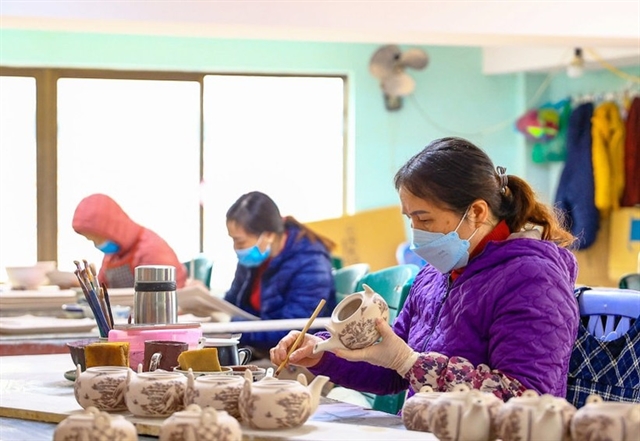 Economy
Economy

The Government should offer preferential policies for property firms which develop green urban areas, said Đỗ Viết Chiến, general secretary of Việt Nam Real Estate Association.
 |
| Experts call for incentives from the Government for green building developers. — VNS Photo |
HÀ NỘI — The Government should offer preferential policies for property firms which develop green urban areas, said Đỗ Viết Chiến, general secretary of the Việt Nam Real Estate Association.
Speaking at a forum held in Hà Nội last week, Chiến said green construction development in Việt Nam had a lot of potential but also posed challenges for the building industry as it was still a new concept.
"Việt Nam lacks technical solutions and green materials, while facing weak management in operating green constructions. The country’s legal framework does not have incentives for green building development," he said.
He added that the participation of financial institutions and energy saving funds to encourage green building was still limited.
"From a practical point of view, green development is a growing trend, which is the way we have to go," he noted.
He suggested that the Government should encourage investors to develop green buildings. Borrowing and investing in such constructions should be made easier. It should also be made mandatory to develop green buildings. For example, on areas of 20 hectares, developers must set aside 5-7 per cent of land for green buildings.
Nguyễn Hồng Thục, director of the Research Institute for Resettlement of Việt Nam, said the first new urban area in Hà Nội was built in 1996. At that time, people were still unsure of apartments and preferred low-rise accommodation.
After many years of urbanisation, apartment buildings have become increasingly popular. As urban areas spread, the city faces a crisis.
"Now, we are in the midst of an urban crisis, which is a living environment crisis. So, to build a good urban area, we need the participation of not only the Government, but also professionals, people and businesses,” Thục said.
However, she said Việt Nam was in the early stages of green construction which could not catch up with rapid urbanisation.
To improve quality of life, she said that more green buildings were needed. However, in order to do this in Việt Nam, there was a need for social consensus. Therefore, it was necessary to improve awareness of green buildings and green urban areas.
“In my opinion, three important factors for a green building include fuel saving, open space and mindset changing,” she added.
From the view of a property firm developing green buildings, Trần Như Trung, deputy general director of Capital House, said they looked forward to developing green buildings that bring benefits to their customers.
“However, we are facing difficulties. Not only us, but many companies in the south also encounter the same situation. Businesses want to make more green constructions as one building can’t make the whole city green.” — VNS




